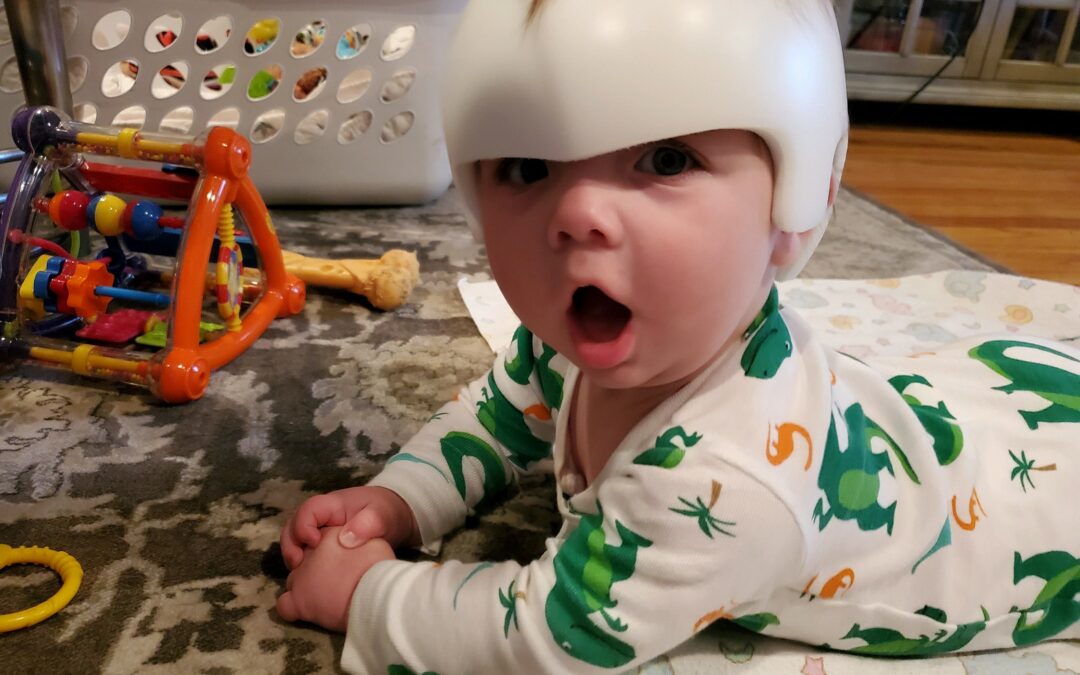Have you noticed that your newborn is tilting his/her head to one side a lot? Or seems to only turn their head one way in their crib? If so, your infant may have torticollis (which is latin for “twisted neck”). This condition is completely treatable, read on to learn more about infant torticollis and what you can do to help your child.
Torticollis is a condition diagnosed in infants who hold their head tilted or turned to one side. We don’t know exactly what causes it but it could be due to your baby’s position inside Mom’s tummy before birth or from minor trauma during birth. Whatever the reason, the large rope-like muscle that runs down both sides of the neck from the back of the ear to the collarbone, called the sternocleidomastoid muscle (SCM), becomes tightened and restricts full movement of your baby’s head and neck. As the infant grows and gains more control over their body, they find it increasingly harder to turn their head in one direction and so they turn the opposite way instead, making their neck muscle even tighter, making it even harder for them to turn their head in the opposite direction. When starting treatment, parents will get support from professionals on the best ways to position their baby so that they can stretch the SCM and achieve full range of motion of the head and neck and will give you exercises and ideas of things to work on at home.
If torticollis remains untreated it can eventually affect other areas of the body. Some babies can develop a flat spot on their head by keeping it turned to one direction only. This is called plagiocephaly. If this happens, your baby may need to also be seen by someone who can measure them for a helmet which will help correct the shape before they turn 18 months, when the skull is more solid and less able to be molded. Additionally, we can see differences between how your baby moves his/her body and limbs. This is due to the fact that if we have a range of motion issue in one area, frequently our bodies try to compensate by altering motion in another area. We want to catch these things now so that they don’t cause issues with crawling, running, or climbing stairs in the future.
Our therapists at Kid Physical have over 20 years experience helping babies recover from torticollis so if you have questions or concerns about your child and how they are moving, feel free to reach out for an evaluation.

